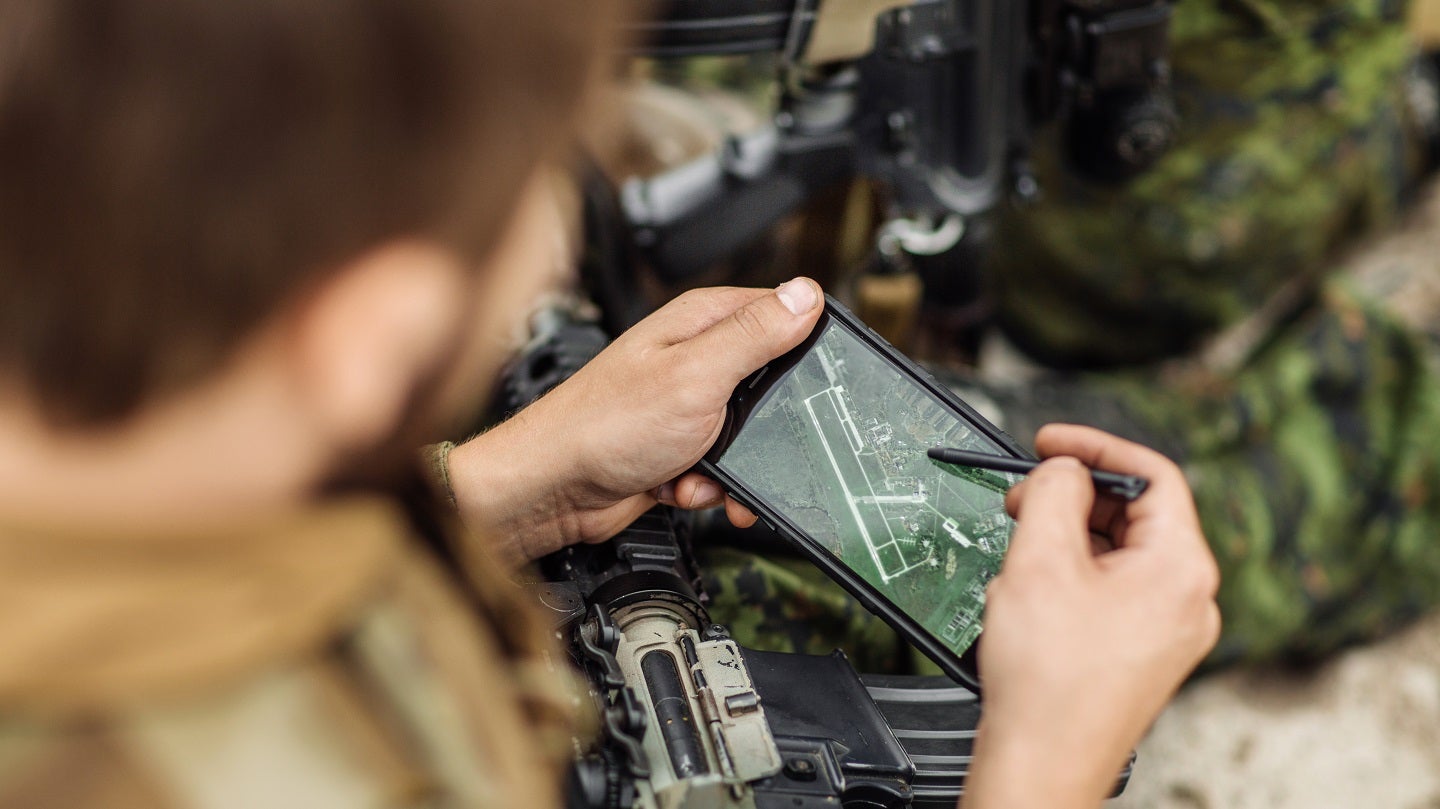
Discussions surrounding 5G tactical communications systems in defence are often dominated by the arguably ‘hotter’ topics of extra high data speeds and superior performance. Macy Summers, CEO at Blu Wireless Technology, Inc., examines the importance of the military’s silent partner: LPI/LPD (low probability of interception and low probability of detection) wireless networks which will define the future of the battlefield.
The origins of modern LPD (Low Probability of Detection) and LPI (Low Probability of Intercept) communication are rather glamorous. At the beginning of World War II, Hollywood actress Hedy Lamarr, in collaboration with composer George Antheil, invented a radio guidance system for Allied torpedoes that used spread spectrum and frequency hopping technology to defeat the threat of jamming by the Axis powers. Both types of technology – spread spectrum systems and frequency hopping – are used to this day, but how far have we come since WWII?
While LPD and LPI are almost exclusively referred to in tandem, there are significant differences between the two capabilities, with LPD delivering a greater advantage in tactical scenarios. While perfect LPD will likely never exist, emerging technologies utilising the V-band are proving to be intrinsically LPD – providing highly robust LPD through atmospheric oxygen, effectively blocking transmission at a distance.
Why LPD comes first
With LPD, the enemy’s electronic warfare systems cannot detect your electronic emissions or have a very low probability of doing so. On the one hand, LPI is different because an emission is detected, but the likelihood of making some intelligence out of the emission is limited. In tactical scenarios, therefore, LPD is the more important of the two! If you can’t detect a tactical team, you also won’t be able to intercept their communication.
There are several ways to hide electronic emissions.
The first uses hopping frequencies to confuse adversaries. This technique is widely used today, and it delivers a basic level of LPD. A second method is spreading the signal across large bandwidth. By modulating the signal and then spreading the signal across a broader bandwidth that’s significantly (10 or 20) times larger than the initial slice of the spectrum, you considerably lower the visibility of the signal into or near the noise floor. Hiding in plain sight is another. Military cellular users in dense urban areas are challenging to discriminate against because of the number of commercial, civilian users.
How well do you really know your competitors?
Access the most comprehensive Company Profiles on the market, powered by GlobalData. Save hours of research. Gain competitive edge.

Thank you!
Your download email will arrive shortly
Not ready to buy yet? Download a free sample
We are confident about the unique quality of our Company Profiles. However, we want you to make the most beneficial decision for your business, so we offer a free sample that you can download by submitting the below form
By GlobalDataDirect Sequence spread spectrum is possibly a more effective LPD schema; however, both systems offer limited LPD these days. Modern electronic warfare systems use powerful computing algorithms to scan and detect a wide range of radio emissions rapidly. Since sub-6 GHz signals are the staple of armed forces’ terrestrial radios worldwide, this leaves a massive vulnerability when engaging near-peer adversaries.
Have military forces given up on LPD?
Today’s electronic intelligence platforms are airborne and can detect line-of-sight signals at a great range. When detected, a friendly force will try to jam or ‘throw a radio pattern null’ at the adversary. Jamming sends higher-power signals to overwhelm the adversary’s receiver. Jamming is very effective, but it doesn’t change your profile regarding the probability of detection.
Other LPD systems are either incredibly basic (naval forces signal lamps (blinker tubes) to communicate) or particularly effective but impractical in tactical scenarios. An example of the latter is free space optics (FSO) which works well in space and aviation, for instance, for satellite-to-satellite communication, but not on the ground as it requires the use of costly FSO lasers that are impractical for tactical teams and highly susceptible to rain, fog, clouds and other atmospheric aberrations.
How V-band delivers intrinsic LPD
The V-band at 57-71 GHz is an unlicensed mmWave radio frequency band with the unique capability of being LPD by its very physics nature. V-band truly is a winner of the LPD competition.
V-band is unique because it causes radio signals to resonate perfectly with oxygen molecules in the air– a phenomenon we call oxygen absorption. The oxygen creates an incredible spike in attenuation that almost appears like a brick wall at a distance and creates a curtain of invisibility between a tactical team and its adversary. Within the V-band, connectivity truly has an LPD quality.
In practice, companies like Blu Wireless are leveraging the benefits offered by the V-band to deliver LPD-grade gigabit connectivity at the tactical edge, for example, scalable connectivity between vehicles.
LPD and the battlefield of the future
Some of the significant advancements we’re currently seeing are occurring within electronic support measure (ESM) systems used to detect the aforementioned frequencies. ESM systems monitor the spectrum and detect adversary systems very quickly. Once an emission is found, it’s becoming easier to identify who it is coming from.
As such, we’re seeing a shift towards mobility, with tactical groups knowing they must be continuously on the move to avoid being detected and targeted with lethal effects. At the halt, they are easily detected, with V-band or FSO technologies being the only exception.
LPD is the military’s silent partner, and the stealthy V-band wireless networks are set to define the future of the battlefield. Networks with LPD capabilities will empower tactical forces to maintain an element of surprise and project force while operating without the threat of electronic warfare.








Related Company Profiles
Axis AB
LPI Inc
Blu Wireless Technology Ltd
ESM, Inc.